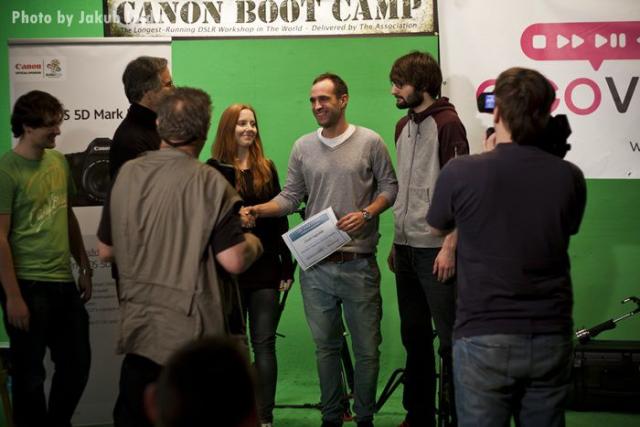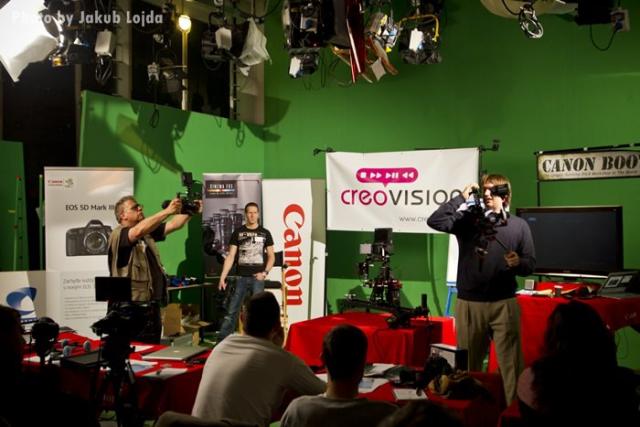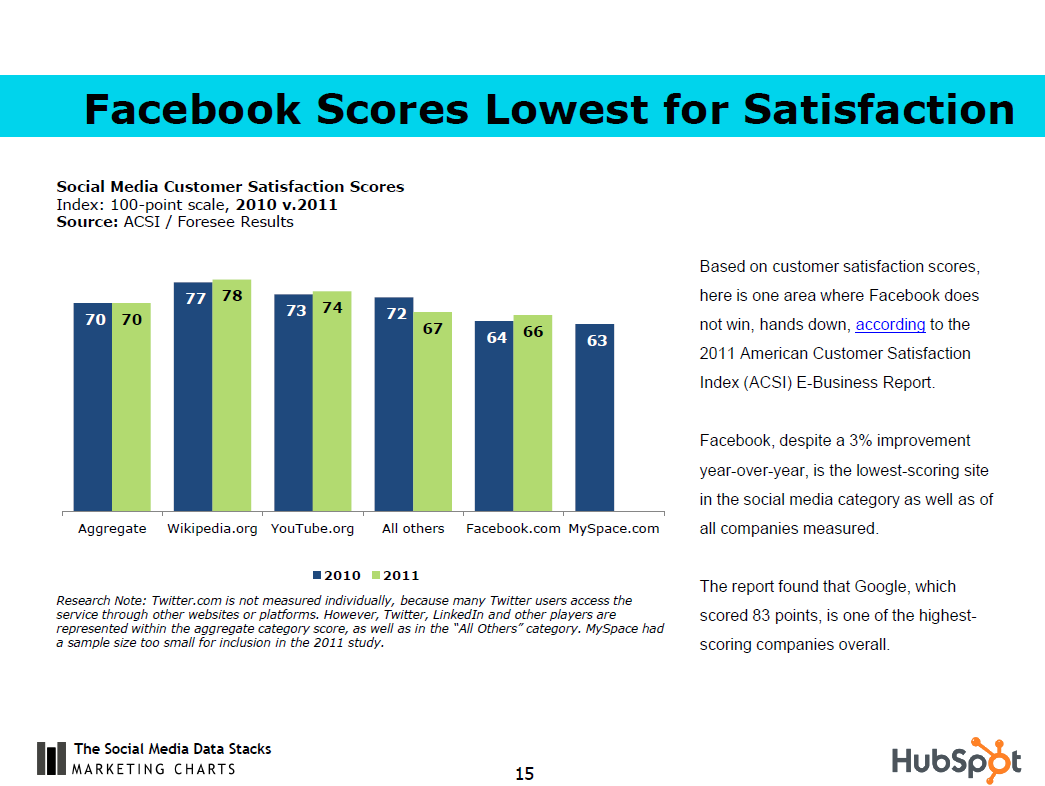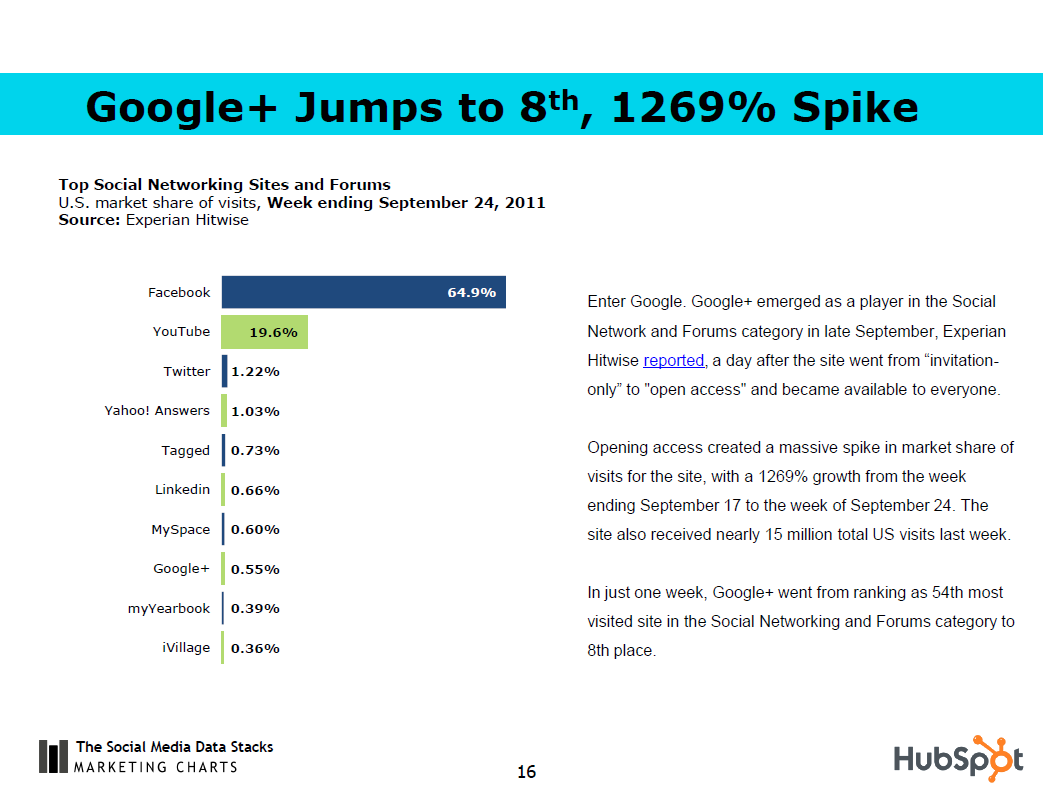
Monthly Archives: March 2012
Trevor Eisenman is a senior strategist at
Trevor Eisenman is a senior strategist at The Association, an award-winning visual media company specializing in integrated marketing solutions for businesses seeking a competitive edge in today’s marketplace. Trevor’s unique ability to translate client needs into effective multi-platform campaigns has helped business owners increase brand awareness and rapidly expand into new markets. He strips away the complexities of social media and Internet marketing with tangible tools to connect with online consumers. Trevor’s performance-driven approach consistently results in more new business, increased sales and profits for clients. Contact Trevor@theassociation.tv.
What is Online Optimization?
Optimization may seem like it's really hard to understand. At least, I thought it was when I first got into the field of online marketing.
After studying it, and taking it apart, I came to realize optimization is quite simple. Since online optimization is crucial for any effective marketing plan, it's best to understand it as well as possible. Even if a business owner isn't personally going to "optimize" anything online, and the work is hired out, don't you want to know what your expert is doing?
Behind the shroud of complication is a really simple concept: Get found online.
Just about every business online is online because they want to get found, right? Why else would a business have a website? Actually, it almost doesn't matter what kind of online presence it is; website, Facebook Page, blog, etc. As long as it supports text and can be accessed by Google, it can be an effective tool to help a business get found. But let's keep it real and compare optimization to something we all are familiar with, which is finding a life partner. I know, strange right? But it's pretty similar and makes for a good analogy.
Here's the scenario from a bygone era: Potential Groom is looking for a Potential Bride. Today's it's online dating, but not so long ago, a well-to-do gentleman hired a professional matchmaker to help him find a compatible mate. The Potential Groom describes qualities he desires, and the Matchmakers checks against her list of Potential Brides and their qualities. Since the Matchmaker's business is to know exactly what those qualities are, she has her little black book all filled out in advance so she may make matches more quickly.

For a business, the roles are as follows: The potential customer or prospect is the Groom who is looking for certain qualities. The website is the Bride, and has listed her qualities in specific, known places for the Matchmaker to locate and categorize. The Matchmaker in this case is Google (and other search engines like Yahoo or Ask.com) who makes it their business to know every publicly listed website on the web and their qualities. Google's systematic categorization of websites could be likened to the Library of Congress. Can you imagine walking into a library and not having access to an index to find a book or other publication? Obviously you'd never find the book you were looking for without a systematic approach and an index. Indexing documents and publications (websites, etc.) is the role that Google fills, except that it's online.
The bottom line is that optimization comes down to making sure your online presence (whatever it consists of) is findable and maybe categorized properly by Google and other search engines. There's no magic, just systematic and precise procedures to get the right words into the right places. While that's a whole technology in itself, and it's best to have professionals optimize websites, anyone can leverage a blog and learn basic techniques to create better visibility for their business. Of all the tools, blogs are the best and easiest to implement.
For more information and an increased understanding, watch my free webinar which discusses blogs in more depth, and clears up a few other basic terms used in corporate social media. Ever wonder where the word "blog" comes from? Or "Google?" Find out by watching the webinar! Happy blogging.
Managing Your Business Blog
Simplifying Corporate Blogging
![]() A primary barrier to a successful blog is creating enough content. A close second is managing the content! For those who work out how to create a decent volume of content, they can easily get buried under plain old content logistics. So when we launched our blogging system here at The Association, I was careful to choose a platform that would simplify the work required after the content was created. Thus, we choose Compendium.
A primary barrier to a successful blog is creating enough content. A close second is managing the content! For those who work out how to create a decent volume of content, they can easily get buried under plain old content logistics. So when we launched our blogging system here at The Association, I was careful to choose a platform that would simplify the work required after the content was created. Thus, we choose Compendium.
As they say on the Compendium website, “Whether you’re managing 300 authors in 50 locations and generating 5,000 customer stories or just a small team, Compendium’s hosted platform will simplify your blogging program.”
How does it simplify the logistics? Well, if you have multiple authors submitting content via email, that alone can drive you crazy just keeping track of changes. What if more than one person needs to approve the content before it gets submitted? What if, horror of horrors, online searchers find your blog and actually start leaving comments? Oh, and I almost forgot to mention the spam bots that leave non-sensical blog spam. Those have to be “managed” as well.
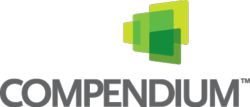 Spend Less Time Managing
Spend Less Time Managing
Automatic categorization is a prime feature in the Compendium system. Categories of content are worked out in advance, usually around specific keywords, to increase “findability” of the online content. By simply mentioning the category by name in the content, the article is automatically assigned to that blog. This feature alone makes your Compendium blog exponentially more powerful than an ordinary blog, because even with just the basic Compendium package, you have 25 categories to organize your content around. If your content is going to show up on the first page of Google search results, it’s important to “pick your battles” by selecting specific categories to write about. Writing without establishing niche categories can be fruitless, as there isn’t enough focused content with keywords around specific topics to create visibility. Compendium is neatly built around the idea of niche categories.
Approval layers are already built into the Compendium system. Each author in The Association has their own account on Compendium that helps them create content. A nice extra feature is that authors may email their content into Compendium’s system, then log in later to modify and submit it for approval. There are two possible layers of moderation available. There can be a single Moderator who approves all authored material and comments, and a second layer of approval may be added (for example, a technical or Executive approval layer could be added prior to content reaching the public view). Authors may also be approved to just publish directly to the blog without moderation if preferred.
Customers provide the best kind of content. Feedback and testimonials are very worth capturing, but it can be difficult to accomplish. Here again Compendium has a feedback loop built in. Customers and clients fill out a simple web form, and the content is sent to the Moderator. Once approved, the Compendium system alerts the contributing customer that their content is live on the blog, and gives them the opportunity to share it on their personal Facebook account. This kind of referral marketing can substantially improve a company’s bottom line by validating them as an excellent source of service and/or products.
Using Compendium has allowed us to effectively increase our visibility for our Canon Boot Camp classes. Half of our class signups consistently come from internet searches, which was not the case when we started the blog in July 2010. This graph illustrates the increased blog visits from July 2010 to March 2012. We produce an average of 4 blog posts a week (on a good week).

Using the Compendium system has enabled me to keep track of blog posts more more easily. I handle everything inside the Compendium system platform. No emailing blogs back and forth for approval. I can send comments and decline articles as needed, and approve them to become visible. It’s seamless and easy. One moderator could handle as many as 250 blog posts a week without much strain, assuming he was full time. But most companies don’t produce near that much material.
Interested in finding out more about Compendium? We’re an authorized reseller of the platform, and I’d be happy to give a tour of the system and explain it in more detail. Compendium is the Bentley of blogging platforms, in my humble opinion. We are happy to recommend for any effective marketing plan.
DSLR Video Workshops: Shoot Like A Pro
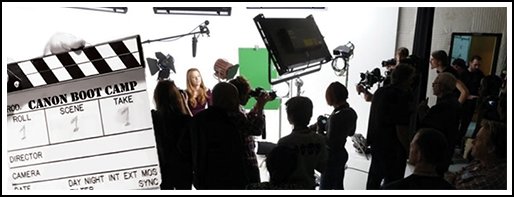
Canon HDSLR video technology is moving fast. Are you on the Canon Cutting Edge?
Nearly every day here at The Association we get requests and resumes from DPs, Directors, actors and various other industry pros that would like to work with our company in various areas. While it would be wonderful to give everyone employment, it’s just not feasible for a variety of reasons. The primary one being that we can’t hire everyone, obviously. But what if there was a way to get work into the hands of many of these pros even if we aren’t the ones hiring them directly?
And so the Canon Boot Camp was born. As a result of taking the class, many of our graduates have been able to book jobs using their new DSLR skills.
Fletch Murray, the chief instructor for the class, started the Canon Boot Camp to bring this cutting edge technology to anyone who wants to grasp it and run with it. I know, I know. You’ve probably been to a “workshop” to learn the video capabilities of the Canon DSLR 5D or a similar camera, paid $30 or so and sat through a class that didn’t really make you more capable. This isn’t the kind of training we deliver.
Our attitude is more like this: we assume you’ve lied your way onto a video job and you need to know how the camera works. How it REALLY works. Not just the theory behind it. The actual settings, how to set up the lighting, and even the post production work flow.
To accomplish this, we’ve created two levels of classes: Pro Level I and Pro Level II.
Pro Level I: The Basics to Shoot Like a Pro
Pro Level I is geared for anyone. We have had industry pros, still photographers and even a few people who had just purchased a Canon DSLR 5D and weren’t sure yet how to turn it on. To prepare people for the class, Fletch has prepared a Reference Manual with the terms and concepts each person needs to know before they come to the class. This class is a level playing field for anyone that wants to learn Canon HDSLR Video basics, and comes with Canon Certification.
Pro Level II: Advanced Training: Shoot With the Pros
The Advanced level of our Canon camera classes, this is where we put into action what was covered in Pro Level I. Complete with script, actor(s), cameras, lighting and all the trimmings, the participants shoot a sequence of scenes designed specifically to impart specific skills. Here’s a few videos that were shot by Pro Level II participants:
The Association’s Canon Boot Camp Pro Level II class is in production on a soon-to-be released short film titled “…kindle” starring Anna Easteden and Rachid Makhlouf.
This excerpt shows the results of our scenes lit by candlelight shot at ISO 1250-2500, using Canon lenses on a 5D and 7D.
Our Pro Level II Boot Camp grads try out their new found skills with the Canon 5D Mark II camera in this exciting vampire short, “The Nun Who Lied”.
We chose a Film Noir, black and white camera setting to show off the exceptionally thick, rich (no grain) blacks the Canon 5D can produce.
Our Canon Pro Level II class uses a dolly, jib arm and car mounts to follow our nun’s escape from a dangerous, blood-sucking casting call. Thanks to our Boot Camp Alumni, who helped with the jib arms and car mounts.
Be scared. Be very, very scared.
(Special thanks to EVS for the use of their stage and generous support, to all of our talented cast and crew, and to Vara Reese for her editing.)
Curious about what’s covered in the classes? Email me and get a copy of the Reference Manual for Pro Level I and look it over. Then you’ll know.
Prague Canon Boot Camp Photos
The Association’s Canon Boot Camp is going full force in Prague, our first international Canon Camera Class! Here’s a few shots to give everyone a quick taste of the experience. If you’d like to sponsor a Canon Boot Camp in your town, shoot us an email, we’re happy to discuss possibilities.
Our Canon camera classes were born out of a desire to help Industry Pros increase their skills with cutting edge cameras that reduce production costs while making film-making more nimble than ever. We provide our own Canon certification on Canon’s DSLR 5D and other models. As new cameras like the Canon C300 and the Mark III come out, we’ll be adding them to our class schedule.
Canon Europe was kind enough to make a Mark III available, so Fletch and the crew are already getting familiar with it’s features. They’ll be sharing everything they know at our April 28th Pro Level I Boot Camp. Join us!

A Digital SLR Guide For Canon Shooters

The Association’s now famous Canon Boot Camp has taught hundreds of Canon shooters the basics and advanced techniques of using the Canon DSLR 5D and other Canon digital cameras over the past few years. Over time we’ve worked out hands-on drills, in sequence, to teach our students what they need to know to get DSLR work of their own. We assume that each student has “lied” their way onto a production job the following Monday, and they need to know the camera fast.
We’ve been to the other available Canon classes. Tired of listening to someone drone on and on about the shots they took? Maybe you could look at the camera but couldn’t touch it? That’s not an active learning process that results in being able to take action with the camera. In contrast, Fletch Murray, the Chief Instructor and President of The Association, even created a Reference Manual for the Canon HDSLR to accompany the Boot Camp materials and prep the student in advance of taking the class. Just to make sure they can get the  maximum benefit during the actual Boot Camp!
maximum benefit during the actual Boot Camp!
In the next few months we’ll be expanding our Canon camera classes to include the new Canon C300 and the even newer Canon 5D Mark III to help our students stay on the cutting edge of EOS technology. As I write this, Fletch has his hands on the new Mark III courtesy of Canon Europe, a sponsor of the Prague Canon Boot Camp being hosted by Creovision. So even though the Mark III isn’t generally available yet here in the US, Fletch will be one of the few who have checked out this camera’s capabilities and will be sharing his knowledge at the upcoming April Boot Camp.
For those who’d like a first-hand peek at the Reference Manual for the Canon DSLR that Fletch created, it’s available for limited time to those who inquire to me directly via email, even if you aren’t planning on attending an upcoming Boot Camp any time soon. You’ll be added automatically to our email newsletter for Boot Camp updates, and I’ll send the Reference Manual via email.
Customer Stories: Attracting New Customers with StoryCapture Technology
Ever wish you had a few hundred salespeople that worked for free? Well, you can!
Every client and customer you have could potentially be the source of a new client or customer. It's commonly held that referral marketing is the best possible marketing available. But if it's free, why is it that so many companies don't have a plan in place to take advantage of such a marketing program?
It's a heck of a lot of work, that's why. Ok, there's probably other reasons, but for small and medium sized businesses, establishing a referral marketing program beyond just letting it happen naturally can be difficult. Hey, we're already overloaded as it is with just the regular list of chores and customer service actions! Now we have to proactively create a referral program? I don't think so.
But Compendium, the corporate blogging platform we use here at The Association, has made it much easier for businesses to leverage good customer experience into a referral marketing program. They took care of all the logistics. Watch the video above to see the overall flow of their system which works like this:
- We provide excellent training on the Canon 5D DSLR or corporate video production services.
- Afterwards, we invite our clients and customers to provide feedback via a web-based form.
- The content is fed automatically into our Compendium blog system, where it is edited and approved by a moderator.
- Once approved and live on our blog, Compendium's system automatically emails the client/customer and lets them know the content is on our blog.
- The customer/client has the option to share the story on their Facebook network.
This simple system makes it easy and efficient to leverage customer generated content at no cost and spread it through one of the biggest social networks available today. Compendium's already easy-to-use blogging platform does require some time and work to manage, but it's literally a few minutes a day.
How much is one customer worth to your business? How much more would be added to your bottom line if your marketing costs decreased over time and the number of customers gained through referrals increased? There are very few businesses that wouldn't benefit from such a system! If you'd like to learn more about content marketing and how the blog is best equipped to be the hub of the future, send me an email.
Google and Facebook: The Customer Experience Faceoff
A “Face Off” is a open competition or confrontation.
Every year the American Customer Satisfaction Index (ACSI), an organization that measures and scores companies of all kinds across 10 economic sectors (including governmental) scores Facebook and Google (along with many others) on how happy their customers are. Amazingly, Facebook scores among the lowest (bottom 6%). Even though Facebook is clearly the social network of choice by sheer size.
So does Facebook have any real competition? Only time will tell. No one thought My Space was going to go anywhere, but it’s a faint memory after being crushed by Facebook, LinkedIn and Twitter. Anything’s possible. But the current contender is definitely Google+. I suspect that because of this competition, Facebook has been making sweeping changes to solidify their current holdings by improving their Business Pages and making it easier for businesses to tell their story online in a visually pleasing way. While it’s true that people generally resist any change, personally I find the improved interface for Page Admins to be much nicer and easier to understand.
Google has very high ACSI scores (it maintains a score in the 80′s) and if Google+ were to take down Facebook a notch or two, it’s probably going to be because of their focus on customer experience. On the other hand, they have yet to nail the social network aspect despite several attempts. So it’s going to be an interesting year to see who takes the lead. Many people, even older generations, have become somewhat familiar with Facebook while Google+ is still a new (and quite different) experience for the less savvy user. It may be a couple of years yet before Google+ is broadly adopted by consumers. Probably business owners incorporating Google+ into their corporate social media plans will be more proactive in getting on board.
What’s your take? Do you prefer Facebook over Google+? If so, why?
Social Media Users: Talk to Them or Give Them a Deal
Do you use the web as a research and shopping tool? Join the club.
In working with various business owners and individuals on enterprise social media campaigns, it has become increasingly clear that there are 2 activities nearly every modern human is familiar with, regardless of age. 1) Email, and 2) Online search.
Both email and searching online have been around for awhile, so nothing special there, beyond being super useful. They just had more time to get embedded into everyday “normal” use. Business owners, especially small to medium sized businesses, can take advantage of this by promoting discussions and deals on social networks like Facebook and Yelp. For example, Facebook has profiles specifically tailored to business. These profiles are called “Pages” and are similar to personal profiles. However, a very important difference is Pages are fully indexed by search engines like Google. Personal profiles on Facebook are private by natures, and are only minimally indexed.
Due the enormous size of Facebook, carving out a little bit of real estate on this network can provide a budding business with both online visibility and the ability to offer deals while maintaining discussions with customers/potential prospects. I’d go so far as to say that a new business should establish a presence with a Facebook Page first, then get their website going as a more long-term effort to “show up” online. It’s just going to happen sooner on a social network like Facebook, which has tremendous momentum with search engines. The lag time to show up in search results for specific terms relating to your business could be as little as 3-4 months on Facebook, compared to a new website, which might take 6-12 months (if you work it and do it right).
If you’re not familiar with long tail keyword research, now would be about the time to find out about it. Making your social network presence more “findable” through search can be accomplished by locating and using long tail keywords in your marketing copy. Really, part of any effective marketing plan today requires an online presence with long tail keywords. Or you can spend a ton of money on advertising with Google Adwords, which is another common option.
But considering the high amount of usage social networks get for deals, coupons and discussions relating to products and services, it’s important to represent your own business on sites such as Yelp or Angie’s List. Just because a business owner ignores these review sites doesn’t mean their customers won’t create an online profile on their behalf. Many restaurants and other brick and mortar shops are discovering they already have profiles, and both happy and unhappy customers have been talking about them for months. So get online, get involved. The conversation’s already been started, all you have to do is join it.

